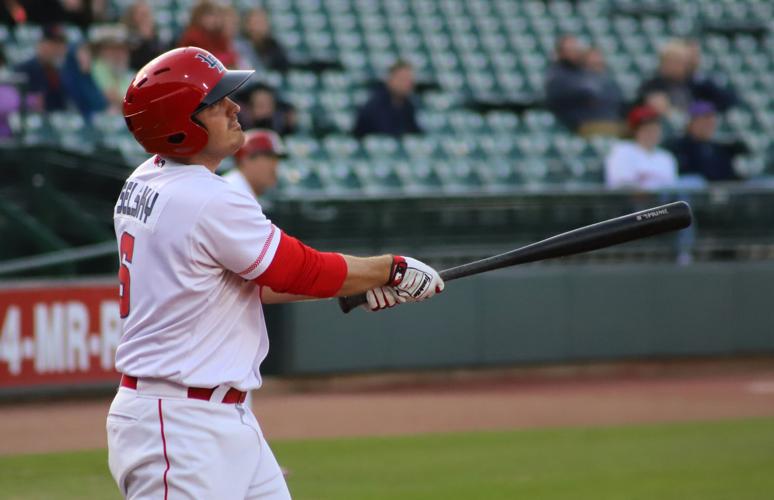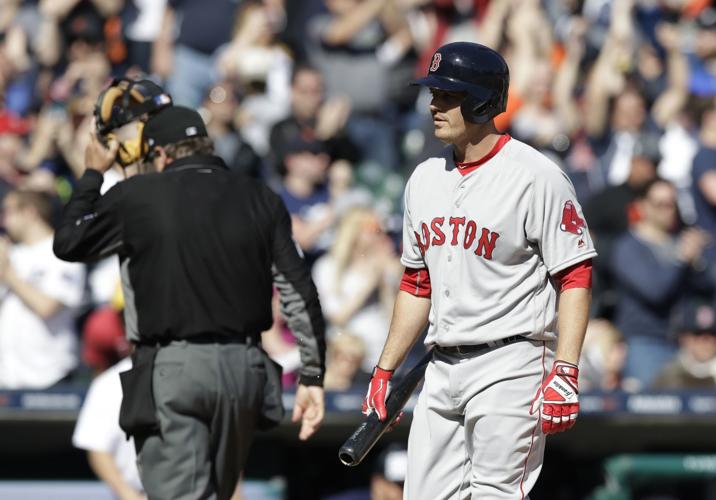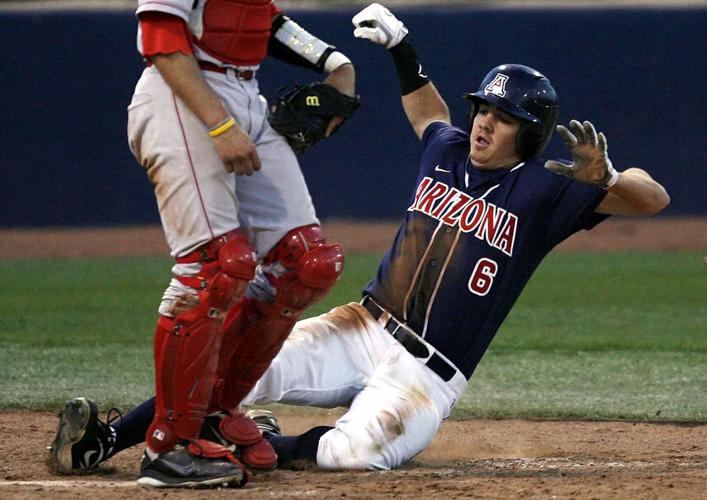ALLENTOWN, Pa. — “You can’t want it so bad that you go crazy,” Steve Selsky says.
The life of a major-leaguer is so remarkably good, the chasm from Triple-A baseball so remarkably high, that it can become both a blessing and a curse to the unlucky few who dangle on the fringes of the game’s highest level.
Only a select few know what that “it” is, and that only adds to the allure. “It” is chartered flights with chairs so comfortable that your back feels like it’s being cradled by a thousand marshmallows. “It” is team meals at Ruth’s Chris Steakhouse, doggie bags full of warm butter cake, crab legs for toothpicks. “It” is Ritz-Carlton robes and heated floors.
For a baseball player that is maybe the fourth-best at his position in an organization — which, with 30 big-league teams, means he’s probably one of the top 120 in the world — it’s almost better not to know.
Because the alternative? Well, the alternative is 11-hour bus rides and team meals at Cracker Barrel and 140 games in 150 days. The alternative is about $2,000 a month instead of $90,000. The alternative is another night in Allentown, of all places.
‘What do I do?’
But man, oh, man, what a beautiful night it is.
Selsky’s Louisville Bats — the Triple-A affiliate for the Cincinnati Reds — are in town for a road series with the Lehigh Valley IronPigs.
Triple-A baseball may be purgatory, but purgatory can’t possibly be this beautiful. Once one of the thriving notches on the Rust Belt — Billy Joel wrote a song about it, for heaven’s sake — Allentown is experiencing a bit of a rebirth. Downtown is thriving. The IronPigs came back a decade ago to serve a hungry-for-sports community, and on this night, Coca-Cola Park, the team’s $50 million stadium, is glistening. “Bacon, USA,” it brands itself, and it smells like it.
This isn’t so bad, really. A fella could enjoy playing baseball in a place like this, and Selsky — a former Arizona Wildcats standout outfielder — certainly does. It sure beats the alternative, which he learned the hard way earlier this year.
On March 31, after an up-and-down spring training with the Boston Red Sox, Selsky was released.
Selsky headed home to Scottsdale, to his wife and golden retriever, not really sure what to do.
“I’d never been released. I’d ever been in a position where I wasn’t on a team,” he said. “I mean, last year I was on the Red Sox opening day roster, and here I am sitting at home. I was like … what do I do?”
Selsky reached out to his agent.
“Do I call people? Are you supposed to call people? Like, what do I do?”
The last day of March is just about the worst time in professional baseball to get released. April Fool’s Day is the next day. You feel like you’re getting pranked.
Selsky and his agent started picking off teams, one by one, as Selsky was picked and prodded at himself.
“I’m sitting there with my wife, and her parents are in Phoenix, and they’re asking me what’s going on, and I’m sitting here like … I don’t know?” he said.
“I have a semester left at Arizona — am I supposed to sign up for classes? Do I go play independent ball and wait around? I have cousins, really close friends back home, people you run into. ‘What are you doing here? Why are you in Arizona?’ ‘Uh, ‘cause I got released. ‘Wow, what are you gonna do?’ ‘I don’t know, I’ll tell you when I find out.’”
It’s a bit embarrassing, frankly. Selsky puts it plainly: “It really kind of puts everything in perspective.”
Quickly it came into focus.
“I spoke to a couple people, and they said, ‘Realistically, how long did you expect to play?’ and I just said until I couldn’t, until they say I can’t play anymore. I still feel like I can help teams win.”
Ten days later, Selsky got his break.
So did Cincinnati’s Eugenio Suarez, and it was a thumb. Hello, disabled list.
Selsky had played in the Reds’ organization from 2011-16, and was well-liked. He’d stayed in touch with the team’s director of player development, Jeff Graupe.
The Reds called up a position player, and then they telephoned Selsky.
“They said, ‘We don’t know if you want it, but we may have a small opportunity for you,’ and I said, ‘That’s all I got!’”
‘Very realistic’
Above all, Selsky is realistic. He’s 28, with brown hair and one of those earnest, aw-shucks faces, but Selsky knows the score.
He was drafted by the Reds with the 1,015th pick in the 33rd round of the 2011 MLB Draft after playing just 18 games as a UA junior thanks to a broken bone in his hand. As a sophomore in 2010, Selsky’s trajectory was sky-high: He batted .370 with nine home runs and 52 RBIs.
With such a low draft selection, Selsky fought an uphill battle since Day 1.
He fought for playing time with both the Rookie-level Arizona Reds and Billings Mustangs, batting .338 in limited action (74 at-bats) with the Reds. A year later, Selsky batted .281 for the Single-A Dayton Dragons, then got bumped up to the high-A Bakersfield Blaze midway through the season.
“I barely broke through low-A my first year, last guy on the roster, a bench guy, and as one of the older guys on the team, so from Day 1 I was like, ‘I better do something to make people look at me,’” he said. “As soon as I got a shot to play, I got three hits, next day two hits, next day a hit. I went from a bench guy in low-A to high-A because someone got hurt, and in my first game, I hit two home runs. Finished with 18 home runs.”
And so it went: Bakersfield in 2013 and a promotion to the Double-A Pensacola Blue Wahoos; Pensacola in 2014 and a promotion to Louisville, where he spent all of 2015 and batted .317 in 51 games.
He played 85 more games for the Bats for Louisville the following season. Selsky was called up to the majors on May 20, 2016, for a game against the Seattle Mariners. He’d go onto play 23 more games for the Reds, batting .314 in 51 plate appearances.
Selsky opened the 2017 season with the Red Sox and played eight games before being optioned to Triple-A Pawtucket, where he struggled at the plate, batting .215.
He had high hopes for the Red Sox this season but he battled the flu during spring training and was shut down for a week, and ultimately, released.
“I’ve always been very realistic,” he said. “If there was no opportunity for me to play, man, I’ve got plan Bs and plan Cs.”
Selsky said he’s always had “high goals,” which included a possible career as an orthopedic surgeon — he began his Arizona career majoring in physiology — but he started getting more and more into business and investing, and he may want to try his hand on Wall Street. He recalls watching CNBC with his father.
Here’s where it gets interesting: If anyone knows the minor-league story, it’s Steve Selsky Sr. The elder Selsky played in the Los Angeles Dodgers and Chicago White Sox organizations but never made it to the majors and had his career ended by a knee injury.
“Seeing the kind of athlete he was, there’s no doubt he could’ve played in the big leagues,” said the younger Selsky, who calls himself the worst athlete in the family, as his mother, Lou Ann, was an Olympic volleyball player, and his sisters, Stesha and Sam, played college volleyball. “When you tore your knee up back then, they really opened up your knee, and he’s got huge scars. There was no rehab. It was like, get better. When he showed up next spring, it was like, ‘Oh wow, you can’t run anymore.’ But he never talked once about regretting it.”
‘An RBI machine’
Speaking of regrets, Steve Selsky isn’t about to leave his baseball career with any.
“It was never, here you go, let’s see what you got,” he said. “It was always, wait, wait, wait, and now here’s your opportunity. I was a 33rd-round pick. I knew it coming in … kind of.”
From an organizational perspective, the Reds are more than glad to have a familiar face back in town, particularly with some crow’s feet beginning to form around the eyes.
“He’s a big addition to our club,” Louisville Bats manager Pat Kelly said. “He was in the organization before, and he’s well-proven as a hitter, but what I think he now brings is that veteran leadership. He’s earned his respect.
“He wasn’t a high draft choice, he worked his way through the minor leagues, got up to the big leagues and performed well at the big-league level. The fact he was available after spring training, I was glad we jumped on him.”
Kelly looks at Selsky as a casualty of the numbers game. “Every club is cutting down at the end of spring, and it’s sometimes a square peg in a round circle; sometimes he’s just not a fit for an organization at one time but he’s a fit for somebody else,” he said. “We had a need and we jumped on it.”
Kelly called Selsky “an RBI machine,” and a player who makes solid contact, and on this night in Allentown, Selsky will hit a home run, and he’ll hit another homer on Saturday, and pick up a game-winning RBI single in the 10th inning on Sunday.
If Selsky is going to make it back up to the bigs, he knows it’s going to take more weekends like this.
“My friends always ask me, ‘What’s it like in the majors?’” Selsky said. “But it happens so quick. Like it’s cool, but you’re almost just like I still have to get ready for the game tomorrow. But they say it’s hard to get to the big leagues and it’s harder to stay.”
Kelly, for one, thinks he’ll be back up.
“There’s a nice target, huh?” Kelly said. “Up there, it’s not too bad. You can make more in a couple days than you can make in a month here, and that’s what you’re fighting for. You’re fighting for service time, and not only in salary, but it’s probably the best pension in all the world. But the way Triple-A is used these days, it’s almost a taxi squad for pro teams, and guys like Steve are one day away from getting right back in.”
And, Stelsky hopes, staying.






